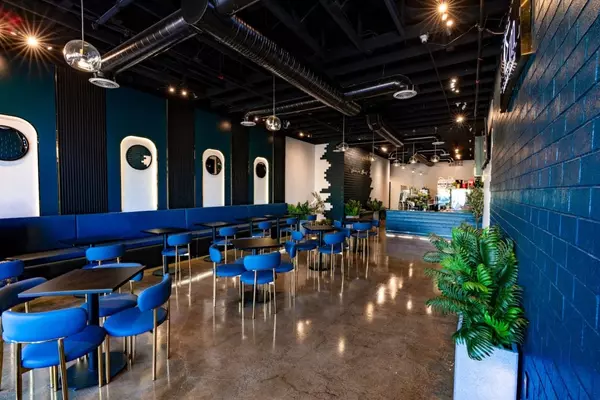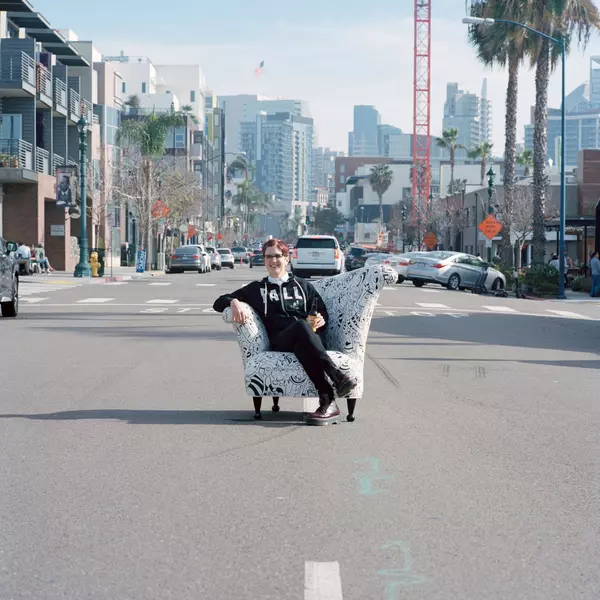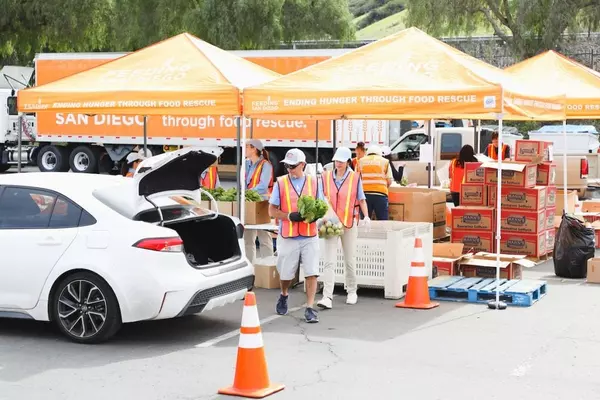Mission Valley bridge over San Diego River, now a $53M project, secures approval
San Diego State University has secured approval to build a $53 million bridge in Mission Valley, southwest of Snapdragon Stadium, that offers a rare north-south connection across the San Diego River.
Last week, the California State University Board of Trustees certified the environmental impact report for the Fenton Parkway Bridge project, signing off on what has morphed into a nearly twice-as-expensive condition of the school’s purchase of the former city of San Diego stadium site now known as SDSU Mission Valley.
The board’s actions pave the way for the school to seek state and federal permits for the bridge, which will extend Fenton Parkway south over the San Diego River to Camino Del Rio North and accommodate cars, bikes and pedestrians.
Construction is expected to start in 2026.
“Now that we have achieved the exciting milestone of the opening of Snapdragon Stadium and most recently have completed and opened the beautiful river park … SDSU has turned its attention to fulfill its commitment to construct this bridge,” San Diego State University President Adela de la Torre told the board’s Committee on Campus Planning, Buildings and Grounds.
“This bridge has been referenced and planned for in city of San Diego regional planning documents, such as the Mission Valley Community Plan, for over 20 years,” she said. “It will improve multi-modal circulation, enhance emergency responsive times in the area and reduce vehicle miles traveled within Mission Valley and thus benefit the community and the city of San Diego at large.”
Contemplated in various forms since the 1980s, the Fenton Parkway Bridge resurfaced in 2019 as a sticking point when the city was negotiating the sale of its Mission Valley stadium site to SDSU. The school went on to purchase 135 acres of land along Friars Road in August 2020 for $88 million, with a commitment in the purchase and sale agreement to build the bridge.
The project calls for a 450-foot-long bridge, built at grade with the trolley crossing, with one traffic lane in each direction and an optional flex lane for use during stadium events and emergencies. The 58-foot-wide bridge will also have elevated bike and pedestrian pathways.
The Fenton Parkway Bridge is meant to be create a north-south connection over the San Diego River — not subject to flooding — that lessens traffic congestion, promotes biking and walking, and facilitates access to the Fenton Parkway Trolley Stations just west of the SDSU Mission Valley campus.
Per the terms of a 2022 agreement with the city, SDSU is required to plan, design and build the bridge. The city, which will own and operate the bridge upon completion, must spend $10.9 million on project expenses. A portion of the city’s contribution, or $2.4 million, is being allocated from developer impact fees already set aside for the bridge. The remaining amount is being allocated from a fund holding $8.5 million in proceeds from the Mission Valley transaction.
San Diego State is on the hook for the remaining expenses, which have swelled beyond expectation. The cost to build the bridge was previously estimated at $27 million in 2018.
“I’m supportive of the project. Obviously, $53 million for a 450-foot bridge … seems to be unbelievably high,” CSU Board Trustee Mark Ghilarducci said during last week’s campus planning committee meeting. “It’s just a staggering number.”
SDSU hired Flatiron Construction to complete the project’s construction documents and build the bridge.
The firm’s $53 million cost estimate is comparable to similar projects and reflects infrastructure construction costs that have shot up by 80 percent since 2020, Robert Schulz, an SDSU real estate and development executive, said at the committee meeting. The university has the option to put the project out for a fixed-price bid when the design documents are completed, he said.
“I should note, building in a protected waterway is its own kind of complexity that most of our projects don’t face,” Schulz said. “Flatiron has a lot of experience working in the San Diego watershed … and a successful track record at getting these things permitted in these really challenging environments.”
The university previously set aside $17 million from systemwide revenue bonds issued in August 2020 to build its Mission Valley campus, leaving a $25 million gap. The school will use revenue from its Mission Valley campus, including fees charged to developers building housing and lab space on the site, to cover the difference.
The city has identified the roadway connection as an essential public project as defined by its land development code, which allows for the bridge to be built in a protected wetland area.
The project, as concluded in the environment impact report, will have temporary significant and unavoidable impacts on nesting migratory birds and endangered native bird species. The project’s construction will disturb the least Bell’s vireo, the California gnatcatcher and three willow flycatcher subspecies, according to the report.
All other environmental impacts were determined in the report to be less than significant or mitigable to a less than significant level.
The report, a requirement of California’s Environmental Quality Act, also found that the bridge will slightly reduce vehicle miles traveled in the area.
In 2027, after the bridge is completed, the total miles traveled within a three-mile radius of the project is projected to decrease by 0.09 percent, and the miles traveled within a five-mile radius of the project is projected to decrease by 0.05 percent. The forecast, which relies on a travel demand model from the San Diego Association of Governments, estimates the same net decrease in 2050.
Wildlife agencies, including some that will need to issue permits for the project, questioned the bridge’s purpose given the marginal impact.
“We strongly recommend CSU and the city adopt an alternative that does not cross the San Diego River and thereby avoids significant direct and indirect wetland impacts,” Jonathan Synder, assistant field supervisor with the United States Fish and Wildlife Service, wrote in response to the environmental analysis.
The Mission Valley Community Planning Group, which supports the project, took issue in its comment letter with the bland design of the bridge. The bridge is designed as a conventional prestressed concrete girder structure and will be supported by concrete abutments in embankments and piers in the river channel. The report studied, but rejected as environmentally inferior, alternative tied-arch and suspension designs.
“(We) would prefer a design that is a celebratory ‘gateway’ to the East Mission Valley community rather than a minimally designed utilitarian bridge,” the community group’s design advisory board wrote.
San Diego State is required to the build the bridge prior to occupying 65 percent of the Mission Valley site, per the terms of its purchase agreement with the city.
To date, the university has completed the stadium and river park. It is in various stages of bringing to life the rest of the development. The campus plan also calls for 4,600 residential units, 1.6 million square feet of office and research space, 400 hotel rooms and 95,000 square feet of campus shops.
Last year, the Board of Trustees approved long-term lease agreements with two different developers, AvalonBay Communities and Chelsea Investment Corporation, to add housing to the Mission Valley campus. AvalonBay’s project calls for 621 market-rate apartments and Chelsea’s project includes 184 subsidized units. Construction on those projects has yet to start.
The school is also in talks with developer LPC West to build three of the research buildings envisioned as part of what the university is calling an innovation district. The parties have yet to enter into a lease agreement and the market for office and lab space has changed considerably in recent years. QuidelOrtho, Naval Health Research, and Family Health Centers, which previously signed letters of intent to occupy the space, are no longer attached to the innovation district project.
“We have new partners in the pipeline as we are focused on larger R&D given the current life sciences market,” Gina Jacobs, an SDSU Mission Valley project executive, told the Union-Tribune.
The university, she said, is targeting project approval by the board in 2025 with a construction start date anticipated in 2026.
Categories
Recent Posts










GET MORE INFORMATION


